Editorial notice
BACKGROUND: The COVID-19 pandemic has accelerated the development of telemedicine technologies. Today there is evidence of the successful use of telemedicine in various fields of health care, in particular in endocrinology. At the same time, there is not enough information for effective integration of telemedicine into the management of patients with various endocrinopathies.
AIM: The aim of this study is a clinical and demographic assessment of the structure of telemedicine consultations (TMC) conducted at the Endocrinology Research Centre in 2020–2021.
MATERIALS AND METHODS: A single-stage, single-center retrospective study was conducted. The study included all patients who received at least one TMC at the Endocrinology Research Centre in 2020–2021. Clinical and demographic information was analyzed (gender, age of patients, region of residence, ICD-10 code). All patients signed voluntary informed consent for TMC. The obtained data were processed using the Microsoft Office 2013 software package.
RESULTS: In 2020, 1,548 TMC were held, in 2021 — 4180 TMC. Among adults, women predominated in the structure of referrals (83–86%), among children there is a tendency towards equivalent referrals for boys and girls (in 2021 — 45% and 55%, respectively). The median age of adult patients in 2021 was 38 years [31; 53], among children — 11 years [7; 14]. In 2020, residents of 74 regions of the Russian Federation applied for TMC, in 2021 — of 82 regions. There is a tendency towards the prevalence of patients from the Central, Volga, Southern and North Caucasian federal districts in the TMC structure. Diseases of the thyroid gland predominated in the nosological structure of TMC.
CONCLUSION: TMC turned out to be in demand in patients with a wide variety of endocrinopathies. It is important to conduct further analysis of both the TMC market and the effectiveness of remote counseling for various nosologies to determine the place of telemedicine in the modern healthcare structure and to introduce TMK into the system of clinical guidelines and programs of territorial compulsory medical insurance funds.
Endocrinology healthcare network and professional education
The strategy for the elimination of diseases associated with iodine deficiency throughout the Russian Federation is based on the adoption of a federal law providing for the use of iodized salt as a means of mass (population) iodine prophylaxis. Chronic iodine deficiency that exists in Russia leads to dramatic consequences: the development of mental and physical retardation in children, cretinism, thyroid diseases, and infertility. Under conditions of iodine deficiency, the risk of radiation-induced thyroid cancer in children in the event of nuclear disasters increases hundreds of times. By definition, all iodine deficiency diseases (IDDs) can be prevented, while changes caused by iodine deficiency during fetal development and in early childhood are irreversible and practically defy treatment and rehabilitation. The actual average consumption of iodine by a resident of Russia is only 40–80 mcg per day, which is 3 times less than the established norm (150–250 mcg). Every year, more than 1.5 million adults and 650 thousand children with various thyroid diseases turn to medical institutions. The cause of 65% of cases of thyroid disease in adults and 95% in children is insufficient intake of iodine from the diet. At the stage of preparing the relevant legislative act, the development and implementation of regional programs for the prevention of IDD is of utmost importance. A typical draft of such a program is proposed in this article for its adaptation and use at the regional level.
Clinical endocrinology
BACKGROUND. Nowadays, the Republic of Belarus belongs to the countries with sufficient iodine supply, which made it possible to reduce the incidence of non-toxic goiter and congenital hypothyroidism. However, even a slight change in iodine consumption influences the pattern of thyroid diseases. In addition to iodine deficiency, other environmental conditions, as well as genetic factors, play a significant role in the etiology of thyroid diseases.
AIM. To analyze the dynamics of the main epidemiological indicators of benign thyroid diseases from 2009 to 2019 in the adult population of the Republic of Belarus, using the data of official state statistics.
MATERIALS AND METHODS. The indicators of the incidence and prevalence of benign thyroid diseases were studied on the basis of state statistics for 2009–2019. To analyze the dynamics of the studied indicators, regression analysis was used with the construction of linear and polynomial models.
RESULTS. A decrease in the incidence and prevalence of diffuse euthyroid goiter and an increase in the incidence and prevalence of nodular euthyroid goiter, thyroiditis, acquired hypothyroidism, Graves’ disease, as well as the incidence of nodular toxic goiter were revealed.
CONCLUSION. Obtained data indicate, that there is an increase in the prevalence of most of the studied thyroid diseases, despite the adequate iodine supply. The above justifies the need for further study of the causes of the identified trends, as well as the necessity of developing new methods of diagnosis and treatment of thyroid diseases.
Tumors of the pituitary gland producing thyrotropin hormone (TSH) are rare and account for about 1–3% of all pituitary adenomas, most frequently occurring in persons of young and working age. This article presents a clinical case of thyrotropinoma in a 44-year-old woman, which was diagnosed 6 years after her initial visit to an endocrinologist. At the debut of the disease, thyrotropinoma manifested as an isolated elevation of TSH, with normal levels of free T4 and free T3. The patient was constantly taking β-blockers due to her disturbing tachycardia. She was diagnosed with subclinical hypothyroidism, for which she was periodically observed, controlling her TSH level and taking levothyroxine drugs in a dose of up to 175 mcg, which was accompanied by elevated TSH levels. After 6 years, there was an increase in free T3 and free T4 in addition to TSH. Magnetic resonance imaging with intravenous contrast enhancement revealed a pituitary microadenoma 4 mm in size, and laboratory examination of all tropic hormones revealed an isolated increase in TSH. Transsphenoidal adenomectomy was performed at the diagnosis of TSH-producing pituitary adenoma. During the three-year postoperative follow-up there was no adenoma recurrence, secondary hypothyroidism developed, the patient currently takes levothyroxine 75 mcg per day continuously
AIM. To present a clinical case of reversible hypopituitarism due to hypophysitis developed after COVID-19 infection.
MATERIALS AND METHODS. A patient with residual clinical manifestations of hypopituitarism underwent clinical evaluation at the time of symptoms of hypopituitarism and in follow-up. Morning serum cortisol (171–536 nmol/l) was measured by electrochemiluminescence immunoassay. Morning ACTH (7.2–63.3 pg/ml), prolactin (66–436 mU/l), TSH (0.25–3.5 mIU/L), fT4 (9–19 pmol/l) and fT3 (2.6–5.7 pmol/l) were measured by chemiluminescence immunoassay. Data were analyzed throughout the course of the disease.
RESULTS. A 35-year-old female developed clinical symptoms of hypopituitarism two months after recovery from a confirmed COVID-19 infection. Laboratory investigation confirmed hypocorticism, hypothyroidism, hypogonadism and the patient was prescribed appropriate hormonal therapy in January 2021. Four months later the symptoms were alleviated (April 2021) and there were signs of recovery shown by imaging and hormonal: morning serum cortisol 227 nmol/l, morning ACTH 33.96 pg/ml, prolactin 68.3 mU/l, TSH 2.626 mIU/L, fT4 10.75 pmol/l, fT3 3.96 pmol/l. Thyroid hormone was discontinued, but hypogonadism and hypocorticism persisted with estradiol — 51.48 pmol/l, 24h urine cortisol level — 41.8 nmol/day. MRI results showed that the signs of hypophysitis were alleviated in comparison with MRI from January 2021. Full recovery of pituitary axis was reported in October 2021, with recovery of normal menstrual cycle. Furthermore, hormonal profile was likewise normal.
CONCLUSION. This report provides evidence of delayed damage to the pituitary gland after infection with the COVID-19, with recovery of its function and structure. To date, the mechanisms of such an impact are not entirely clear; further collection of data on such cases and analysis is required.
Carbohidrates metabolism disturbancies
Imeglimin is the first drug in a new class of tetrahydrotriazine-containing oral hypoglycemic agents called «glimines». Its mechanism of action is aimed at achieving a double effect, firstly, to improve the function of beta cells of the pancreas, and secondly, to enhance the action of insulin in key tissues, including the liver and skeletal muscles. At the cellular level, imeglimin modulates mitochondrial function, which leads to an improvement in cellular energy metabolism, as well as to the protection of cells from death in conditions of excessive accumulation of reactive oxygen species. It is important to note that the mechanism of action of imeglimin differs from existing drugs used for the treatment of type 2 diabetes mellitus. Like glucagon-like peptide-1 receptor agonists, imeglimin enhances insulin secretion in an exclusively glucose-dependent manner, but their mechanism of action at the cellular level diverges. Sulfonylureas and glinides function by closing ATP-sensitive potassium channels to release insulin, which is also different from imeglimin. Compared with metformin, the effect of imeglimine is also significantly different. Other major classes of oral antihypertensive agents, such as sodium-glucose transporter-2 inhibitors, thiazolidinediones and α glucosidase inhibitors mediate their action through mechanisms that do not overlap with imeglimine. Given such differences in the mechanisms of action, imeglimin can be used as part of combination therapy, for example with sitagliptin and metformin. The imeglimine molecule is well absorbed (Tmax-4), and the half-life is 5–6 hours, is largely excreted through the kidneys, and also has no clinically significant interactions with either metformin or sitagliptin.
Bones & Adipose tissues diseases
BACKGROUND: Older adults with severe osteoporosis are the most vulnerable group of geriatric patients. They are shown the purpose of anti-osteoporotic therapy, which should be effective and safe. Teriparatide showed a decrease in the risk of fractures, an increase in BMD. In Russia, the use of teriparatide in the geriatric population is extremely scarce.
AIM: assess clinical course, bone metabolism parameters and efficacy of bone-anabolic therapy in elderly and senile patients with severe osteoporosis and falls.
MATERIALS AND METHODS: The longitudinal prospective study included 100 patients 60 years and older with severe osteoporosis who had one or more falls within the last year. All patients were prescribed calcium and vitamin D preparations and bone-anabolic therapy (teriparatide 20 mg daily subcutaneously). The duration of follow-up was 24 months and included 3 visits: screening, at 12 and 24 months. The effectiveness of bone-anabolic therapy was carried out on the basis of assessing the frequency of new fractures, reduction of pain, changes in BMD according to X-ray densitometry, dynamics of bone metabolism markers.
RESULTS: All patients had severe osteoporosis and aggravated comorbidity status, suffered a fall within the last year, and also low-energy fractures in the past. One in three patients had a vertebral fracture, one in five had a proximal femoral fracture. Prior to the start of the study, 61 patients received antiosteoporotic therapy. During the follow-up, 4 patients died, 96 patients completed the study. Against the background of teriparatide therapy, a decrease in the number of new cases of low-energy fractures and the number of patients with chronic pain was obtained. An increase in BMD was noted in the lumbar spine after 24 months and in the femoral neck after 12 months. There was no negative dynamics of the BMD. Also after 12 months, an increase in P1NP and C-terminal telopeptide of collagen type 1 was noted, after 24 months — osteocalcin and C-terminal telopeptide.
CONCLUSION: The use of teriparatide can be recommended as an effective intervention to treat severe osteoporosis in geriatric patients with falls.
Pediatric Endocrinology
BACKGROUND: The frequency of ectopia of thyroid gland among all types of dysgenesis varies from 30 to 70%, its most common localization is the root of the tongue. Otorhinolaryngologists, oncologists, pediatricians can take lingual ectopia for hypertrophy of the lingual tonsil or fibroma of the tongue root, which leads to unreasonable surgical treatment. Thyroid scintigraphy plays a key role in the diagnosis of ectopia.
AIM: To assess the etiological structure of congenital hypothyroidism (CH) and demonstrate the clinical course in patients with ectopic thyroid tissue in the root of the tongue.
MATERIALS AND METHODS: A group of patients with CH was examined. All patients underwent neck ultrasound and radionuclide imaging. The examination was carried out against the background of the abolition of hormone replacement therapy for 14 days or before its initiation. Patients with ectopia in the root of the tongue underwent videofibrolaryngoscopy. Some patients underwent a genetic study with using genes panel of a panel of candidate genes responsible for the development of CH using the NGS method. The molecular genetic study was conducted to some patients, next-generation sequencing with the genes panel.
RESULTS: The study included 73 patients with primary CH aged from 2 weeks to 17.3 years: 69 children were diagnosed based on the results of neonatal screening, 4 children with thyroid ectopia were first examined older than 6 years. The median age of patients at the time of the examination was 6.9 years [4.8; 10.0]. By data of ultrasound aplasia was diagnosed in 47.9% of patients, one child had hemiagenesis and ectopic thyroid tissue of various localization was detected in 26.0% of children. In 24.7% of children thyroid tissue was found in a typical location. Scintigraphy confirmed thyroid aplasia in 65.7% of children. Examination revealed various variants of ectopically located thyroid tissue in 31 children (42.4%): thyroid ectopia in the root of the tongue in 25 children (80.6%), ectopia in the sublingual region in 5 children (16.2%), double ectopia was detected in 1 child. The median level of TSH in newborns with ectopic thyroid gland was 124 IU/ml and was significantly lower than in children with aplasia — 219 IU/ml, p<0.05. On the other side the level of TG in children with ectopia was significantly higher than in children with aplasia — 37.12 ng/ml versus 0.82 ng/ml, p><0.05. CONCLUSION: Combination of two methods is the best diagnostic approach to determine the etiology of CH — ultrasound and scintigraphy studies compensates deficiencies of each other. Our study demonstrates the importance of scintigraphy in children with CH and patients with the formation of the root of the tongue and the anterior surface of the neck in order to avoid unnecessary removal of the thyroid gland. In case of confirmation of thyroid ectopia in the root of the tongue and in the absence of symptoms of obstruction or bleeding, it is recommended to refer the patient to an endocrinologist for conservative treatment. ><0.05. On the other side the level of TG in children with ectopia was significantly higher than in children with aplasia — 37.12 ng/ml versus 0.82 ng/ml, p< 0.05.
CONCLUSION: Combination of two methods is the best diagnostic approach to determine the etiology of CH — ultrasound and scintigraphy studies compensates deficiencies of each other. Our study demonstrates the importance of scintigraphy in children with CH and patients with the formation of the root of the tongue and the anterior surface of the neck in order to avoid unnecessary removal of the thyroid gland. In case of confirmation of thyroid ectopia in the root of the tongue and in the absence of symptoms of obstruction or bleeding, it is recommended to refer the patient to an endocrinologist for conservative treatment.
BACKGROUND: Self-monitoring of blood glucose (SMBG) with glucometers provides only a snapshot of the glycemic profile and is accompanied by significant psychological discomfort and pain, especially in children. Flash Glucose Monitoring System — FreeStyle Libre (FSL) overcomes many of the barriers associated with glucose measurement and improves metabolic control.
AIM: To evaluate the efficacy of FSL in children with type 1 diabetes mellitus (T1DM) in terms of glycemic control, episodes of severe hypoglycemia (SH) and diabetic ketoacidosis (DKA).
MATERIALS AND METHODS. A multicenter, prospective, observational study in real clinical practice was carried out. A total of 469 subjects (258 boys and 211 girls) aged 4–18 were included in the study. The median age was 11.3 (8.4–14.6) years, duration of T1DM — 4.2 (2.1–7.1) years. After FSL start, patient was followed up for 6 months.
RESULTS: After 3 and 6 months of FSL use, HbA1c significantly decreased from 7.4% to 7.1% and 7.2%, respectively (p<0.001). The number of children with HbA1c ><7.5% increased from 51% to 60% and 58% at 3 and 6 months, respectively (p><0.001). The incidence of DKA and SH, as well as the proportion of patients experiencing at least one episode of DKA and SH, were significantly reduced after 6 months of FSL use compared with baseline (p><0.001).
CONCLUSION: The Study demonstrated a significant improvement in metabolic control in children with T1DM 6 months after FSL start: decrease in HbA1c, accompanied by reduction in incidence of DKA and SH.
BACKGROUND: Cushing’s disease (CD) is a rare disorder of a persistent cortisol excess caused by ACTH-secreting pituitary tumor (corticotropinoma). Transsphenoidal surgery (TSS) is a treatment of choice for СD, which effectiveness range is from 70 to 90%. Recurrence rate after successful treatment is about 25%. If surgical treatment is unsuccessful or recurrence appear, radiation treatment is the next therapeutic option, which effectiveness range is also 90%, but the hypopituitarism rate as side effect of treatment is higher. Preoperative predictors of remission and recurrence are still unexplored what leads to further investigations.
AIM: Analysis of remission and recurrence rates of pediatric CD after successful treatment according to preoperative MRI and therapeutic option.
MATERIALS AND METHODS: We conducted a retrospective analysis of 90 pediatric patients with CD who were observed between 1992 and 2020 at the Endocrinology Research Centre.
RESULTS: The most common clinical symptoms of CD were weight gain [94%] and growth retardation [72%]. Pituitary tumor was detected on radiological imaging in 53/90 patients [59%], there were no signs of visible adenoma in 37/90 of patients [41%]. 63 of 90 patients underwent TSS (70%), 27 patients underwent radiosurgery (30%). Remission rate after TSS was 71% [45/63], after radiosurgery — 85% [23/27]. There were no significant differences in remission rates after radical treatment according to preoperative MRI results (P=0.21 after TSS and P=0.87 after radiosurgery, х2 analysis). Recurrence after successful treatment was diagnosed in 10 patients. There were no significant differences in time to recurrence according to preoperative MRI results (P=0.055, х2 analysis). Time to recurrence was statistically different after TSS compared to radiosurgery (P=0.007, Kaplan–Meier analysis) and in the group with developed adrenal insufficiency in the early postoperative period (P=0.04, Kaplan–Meier analysis). Analysis of side effect of treatment showed that the frequency of growth hormone and gonadotrophin deficiency was statistically higher after radiosurgery (р<0.01, Kruskel–Wallis ANOVA test). Diabetes insipidus was diagnosed only after TSS. CONCLUSION: Results of our study didn`t allow to use MRI-results as predictor of effectiveness treatment in pediatric CD. Therapeutic option has an impact on time to recurrence, not on recurrence rates. The frequency of growth hormone and gonadotrophin deficiency was statistically higher after radiosurgery compared to TSS. Further studies are needed to identify predictors of remission and recurrence in CD.>< 0.01, Kruskel–Wallis ANOVA test). Diabetes insipidus was diagnosed only after TSS.
CONCLUSION: Results of our study didn`t allow to use MRI-results as predictor of effectiveness treatment in pediatric CD. Therapeutic option has an impact on time to recurrence, not on recurrence rates. The frequency of growth hormone and gonadotrophin deficiency was statistically higher after radiosurgery compared to TSS. Further studies are needed to identify predictors of remission and recurrence in CD.
Reproductive Endocrinology
Present worldwide healthcare researches prove that female patients are more sensitive to the population aging. Menopause or climacteria (climax) — is not as ageing itself, but a physiological unstoppable process. The main task for a physician is to improve life quality for female despite of ageing problems. Menopausal hormone therapy (MHT) due to the estrogen component has an anti-inflammatory, antioxidant effect and promotes the expression of telomerase, which together changes the homeostasis and integrity of telomeres. The use of MHT for five years or more can not only significantly change the quality of life, but also increase its duration. Literature search was carried out in national (eLibrary, CyberLeninka.ru) and international (PubMed, Cochrane Library) databases in Russian and English. The priority was free access to the full text of articles. The choice of sources was prioritized for the period from 2019 to 2021. However, taking into account the insufficient knowledge of the chosen topic, the choice of sources dates back to 1989.
BACKGROUND: Type 2 diabetes mellitus (DM2) in men is associated with a high incidence of hypogonadism. Testosterone is a steroid hormone and one of the final metabolites of steroidogenesis, which causes interest in assessing the content of key steroid hormones, their precursors and metabolites in hypogonadal and eugonadal men with T2DM.
AIMS: Assessment of the features of steroidogenesis in men with hypogonadism in T2DM using tandem mass spectrometry.
MATERIALS AND METHODS: A full-design, cross-sectional, screening, single-center, non-interventional study included men with T2DM, who were he was treated in Endocrinology Research Centre, Moscow. The study was conducted from October 2021 to January 2022. Medical history assessment, physical examination with determination of body mass index (BMI), measurement of key steroid hormones, their precursors and metabolites by isotope dilution liquid chromatography/tandem mass spectrometry, glycated hemoglobin (HbA1c) were performed. The groups were compared using the Mann-Whitney U-test for quantitative indicators and χ² with Yates’ correction for qualitative ones. Correlation analysis was performed by the Spearman correlation method. When determining the criterion of statistical significance, the Bonferroni correction was applied.
RESULTS: Patients with hypogonadism had statistically significantly more pronounced obesity compared with eugonadal men. In a comparative analysis of patients, depending on the presence of hypogonadism, there were statistically significantly lower levels of androgen precursors 17-hydroxypregnenolone and 17-hydroxyprogesterone in hypogonadal men. At the same time, a positive statistically significant correlation was found between total testosterone and 17-hydroxyprogesterone. In addition, 17-hydroxyprogesterone, although to a lesser extent, but positively correlated with other androgens - androstenedione (r=0,328; p<0,001) and dehydroepiandrosterone (r=0,183; p=0,004). >< 0,001) and dehydroepiandrosterone (r=0,183; p=0,004).
CONCLUSIONS: In this investigation the prevalence of male hypogonadism in type 2 diabetes, determined by high-precision tandem mass spectrometry, was 69,5%. There was no effect of the disease on the mineralocorticoid and glucocorticoid links of adrenal steroidogenesis. Hypogonadism was associated with decreased levels of a number of testosterone precursors. The most significant of them was 17-hydroxyprogesterone, which can be considered as a marker of testicular steroidogenesis.

This work is licensed under a Creative Commons Attribution-NonCommercial-NoDerivatives 4.0 International License (CC BY-NC-ND 4.0).
ISSN 2308-1430 (Online)



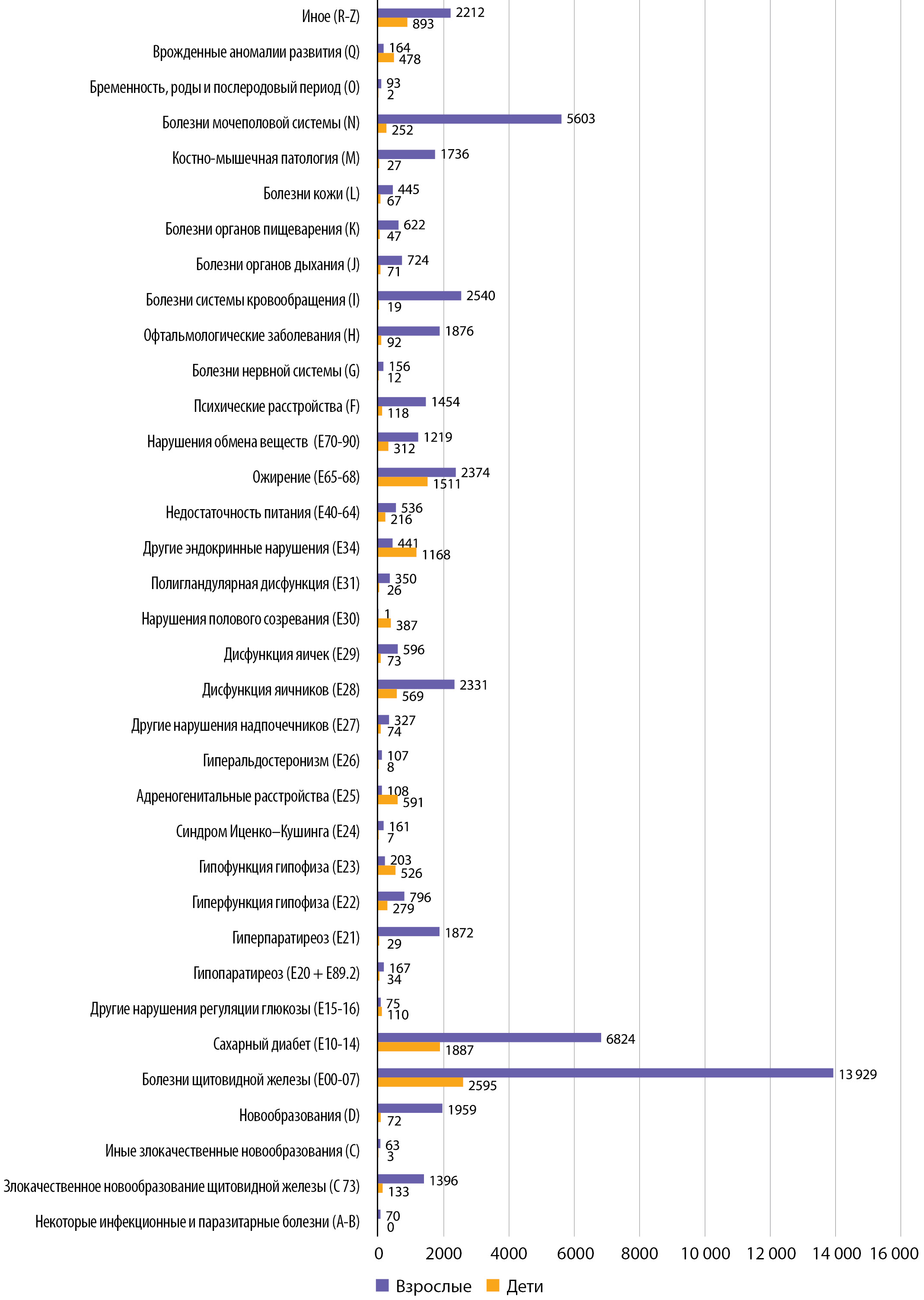

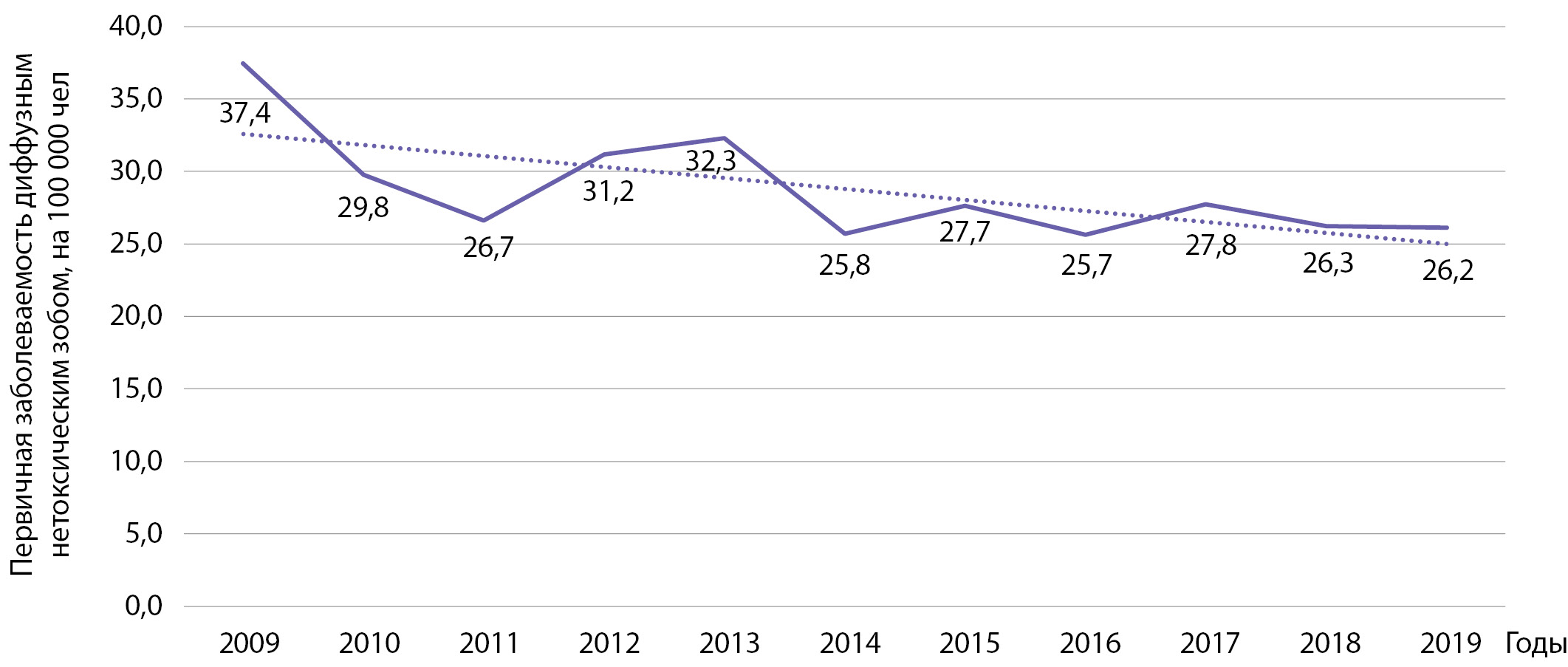

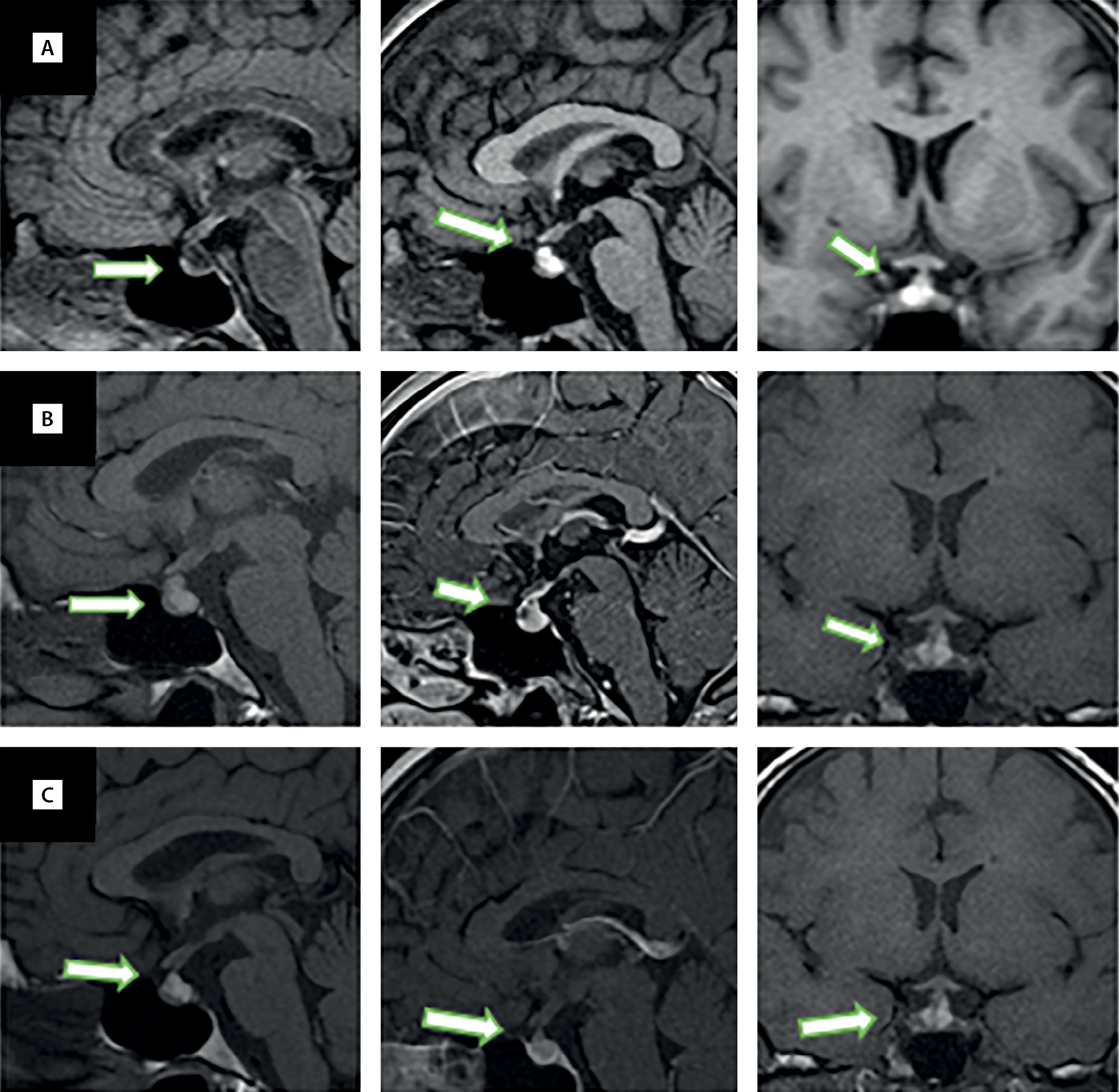
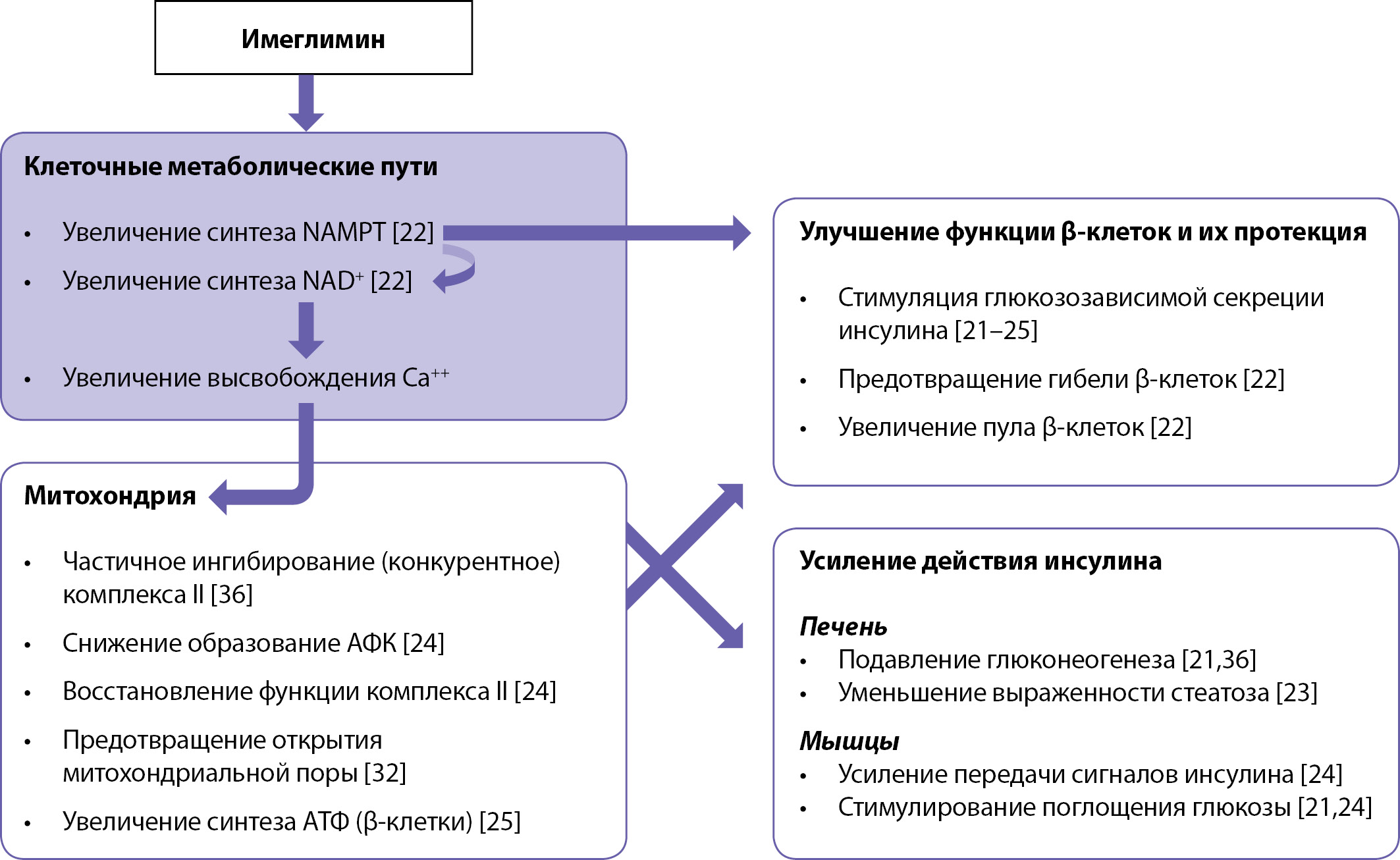

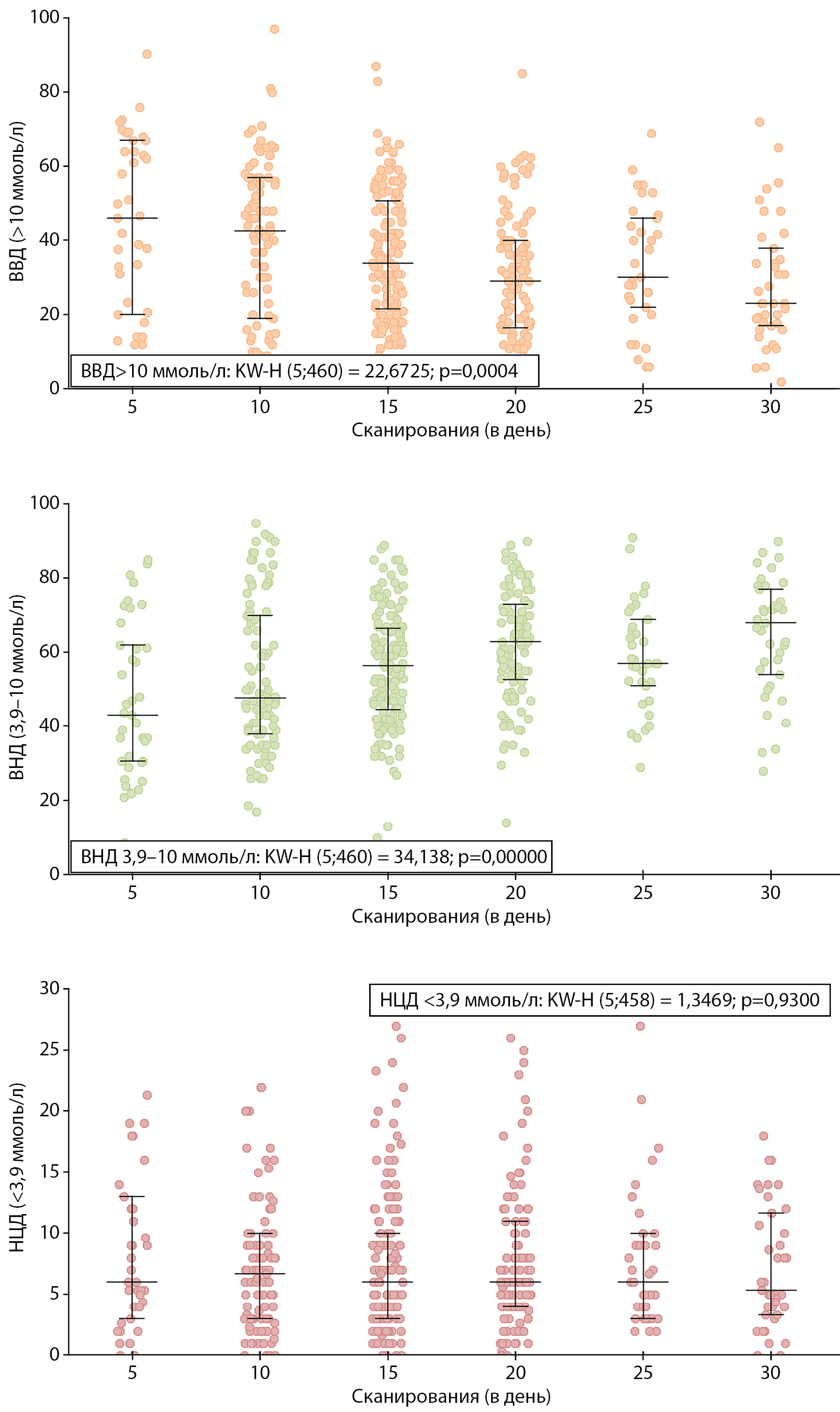
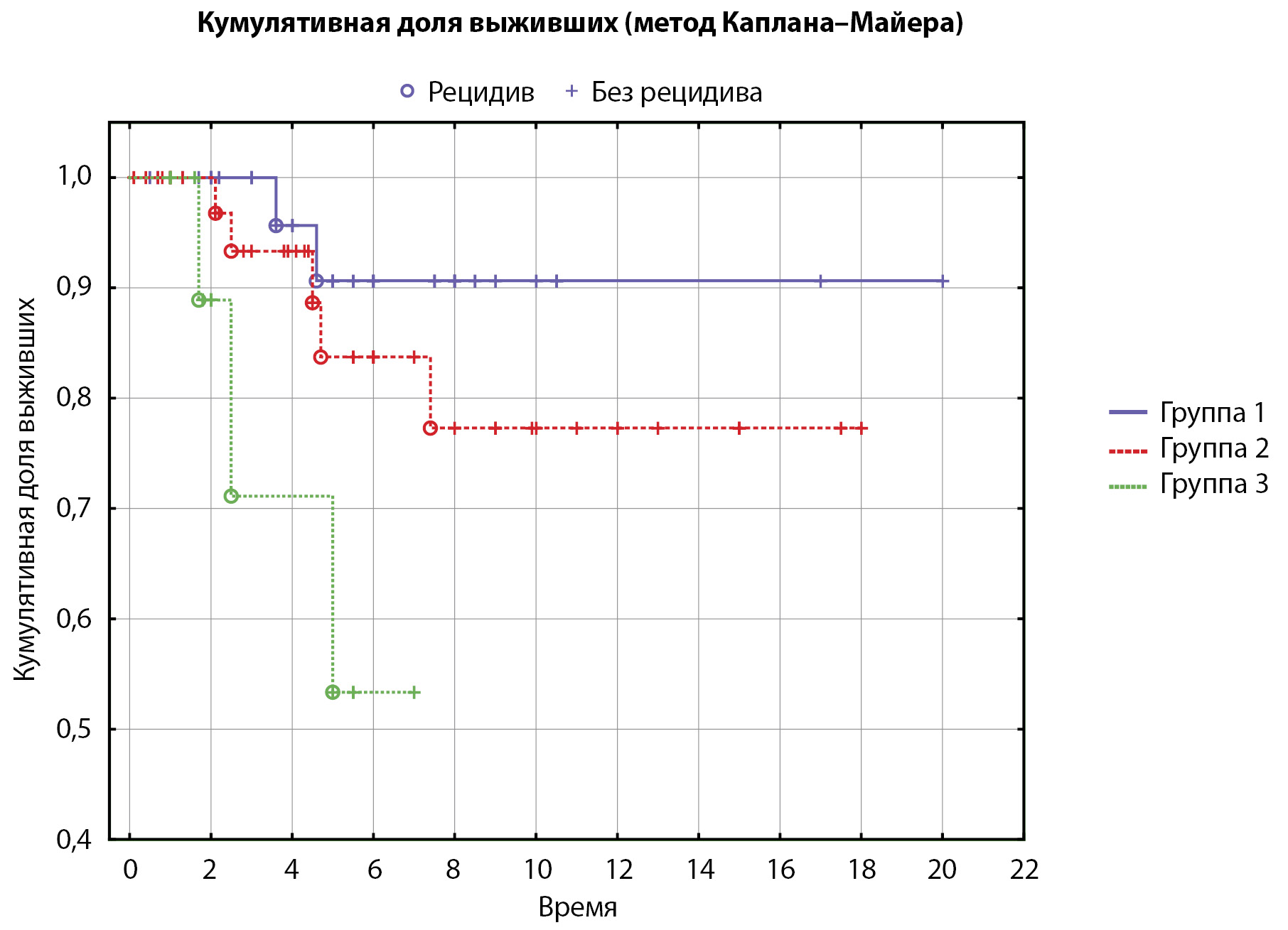





































.jpg)


